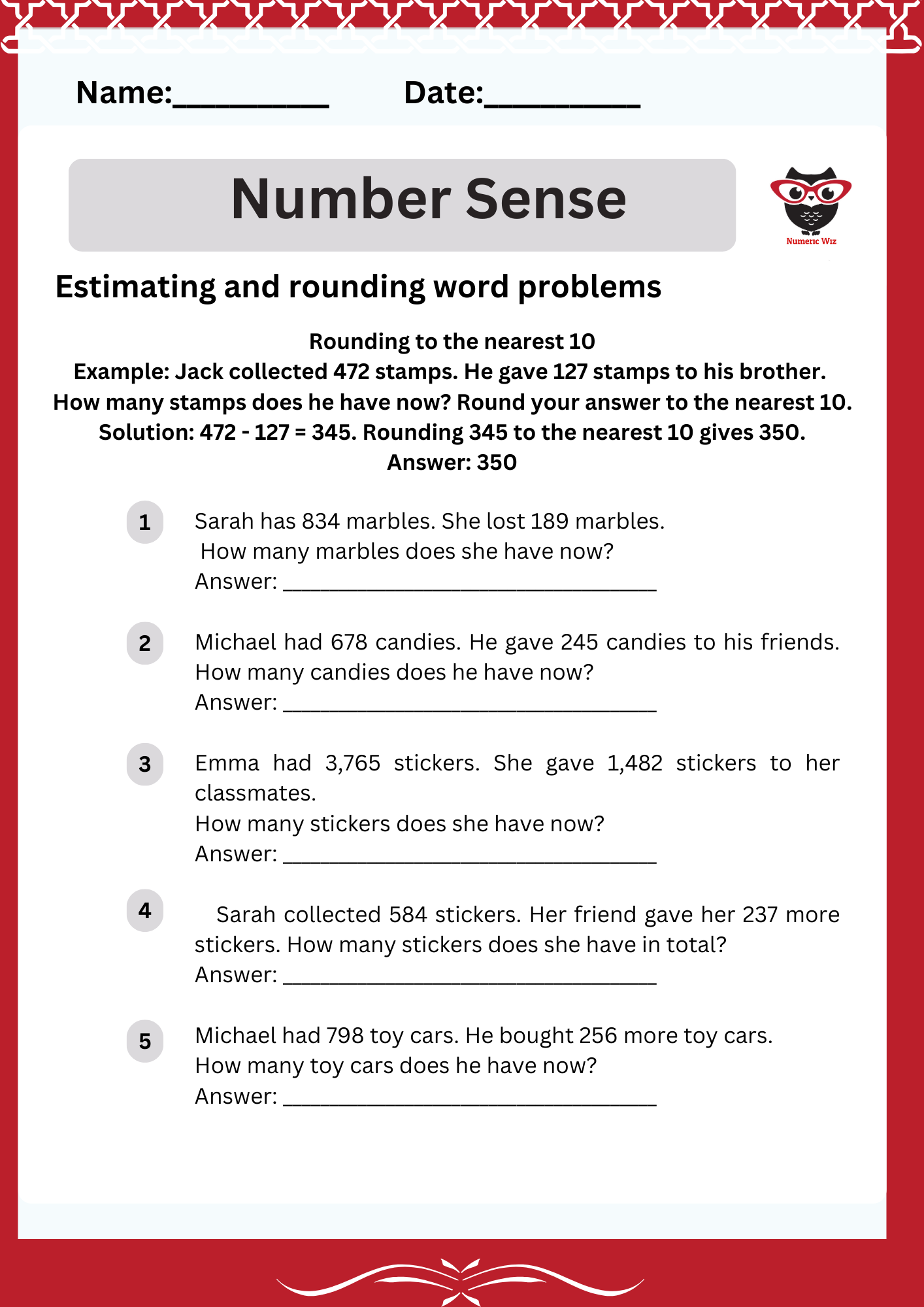
Estimation: Estimation is finding an approximate value or solution to a problem. It is useful when an exact answer is not required or when a calculation needs to be quickly checked for reasonableness.
Rounding: Rounding is a method of simplifying numbers to a specified place value (such as nearest tens, hundreds, or thousands) to make them easier to work with in estimation.

Sarah went shopping and spent $48 on clothes, $32 on shoes, and $19 on accessories. Estimate the total amount she spent by rounding each value to the nearest ten.
Solution:
Round each value to the nearest ten:
$48 rounds to $50.
$32 rounds to $30.
$19 rounds to $20.
Add the rounded values:
50+30+20=100.
Solution: Sarah spent approximately $100.
A factory produces 2,587 toys in January, 3,432 toys in February, and 2,764 toys in March. Estimate the total number of toys produced in three months by rounding each number to the nearest thousand.
Solution:
Solution: The factory produced approximately 9,000 toys in three months.
Estimating and rounding in word problems helps students quickly find approximate answers, making problem-solving more efficient. It is a practical skill in budgeting, measurements, and time management. This ability fosters mental math, decision-making, and real-world application of math concepts.
 By practicing estimation and round-the-world problems, you can solve real-world problems quickly! Let’s practice and evaluate your work together by estimating and rounding the word problems.
By practicing estimation and round-the-world problems, you can solve real-world problems quickly! Let’s practice and evaluate your work together by estimating and rounding the word problems.
For a limited time
